Translated to mean 'A recipe for a good mood', this project was completed during a
6 month exchange program in the Spring semester of 2023, at the Ecole Nationale Supérieure des Arts Décoratifs in Paris.
The project arose from a desire to explore tangible animation toys, with a vision of being able to
ultimately assemble them into a 'short film in a box'. The project ultimately resulted in two prototypical outputs: one, being
a scaled-down version of my physical 'cinema in a box' concept, and the other being a sequential series of narrative animations that
fit within the constraints of animation toys: small frame counts, large-scale movements, and (barring one shot) semantically sensible loops.
The content was designed to be as appealing as possible, especially for children. Desiring a clear beginning, middle and end, I first
referenced stories such as the Panchatantra tales and Aesop's fables before coming to a simple, familiar place for me: the kitchen! Explore
the interactive story through the Figma prototype embedded below, and scroll further down for the process.
The story of the siblings began as a very quick character exploration and simple storyboard. However, it wasn't long before the characters transformed into foxes — for the universal appeal of small animals doing human things, à la Beatrix Potter.
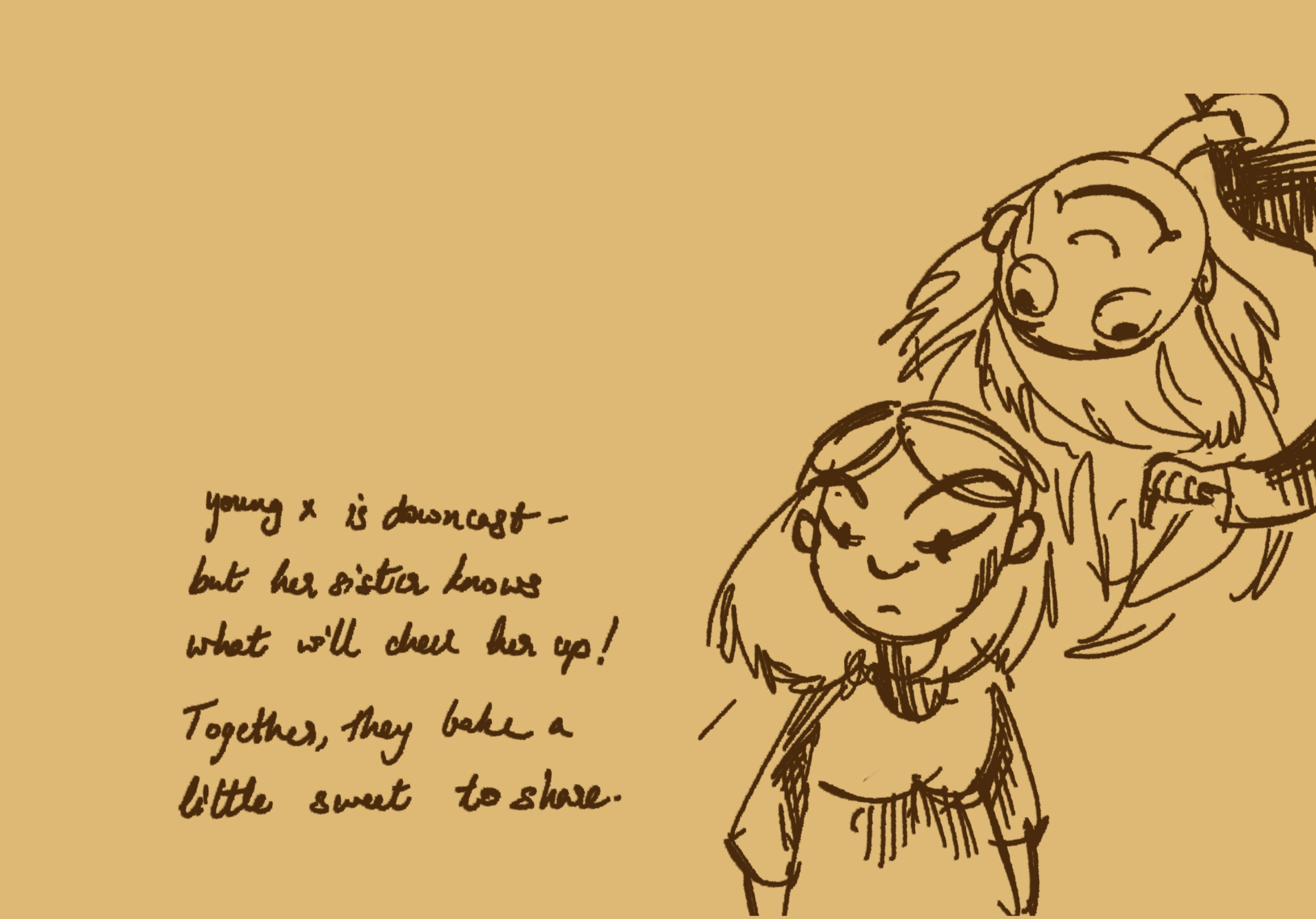
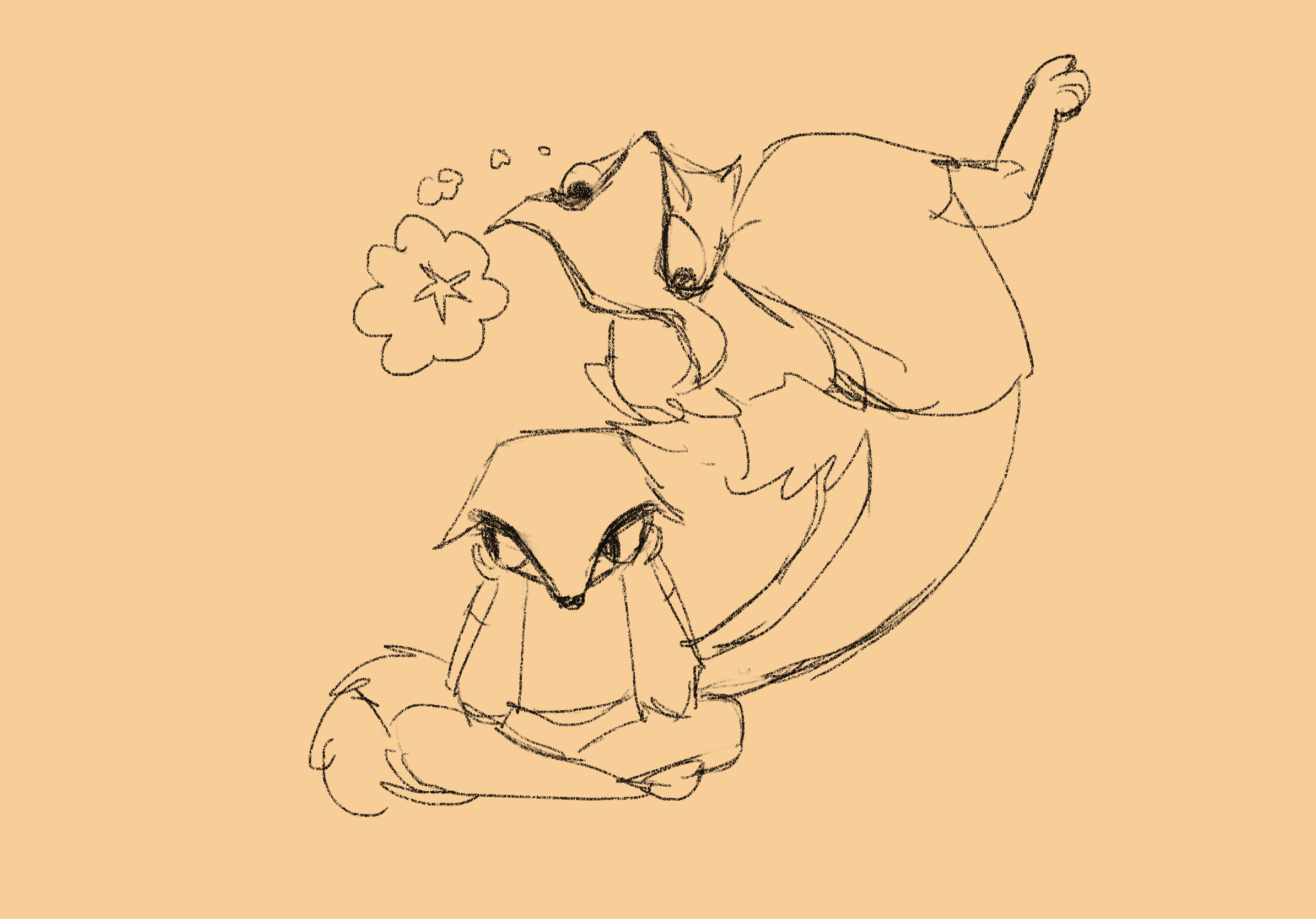

From these, emerged a cleaned-up storyboard; this exercise would have, of course, been incomplete without making sure I was using proper reference — so I finetuned my own recipe and made my own batch of cookies to make sure I was getting everything just right ;) This storyboard was made at a time when I still intented to create a physical object which would dispense a real cookie at the end of the 'short film'. As I would realize in the process of creating the physical prototype, this was too ambitious for the timeframe and given my own woodworking skills.
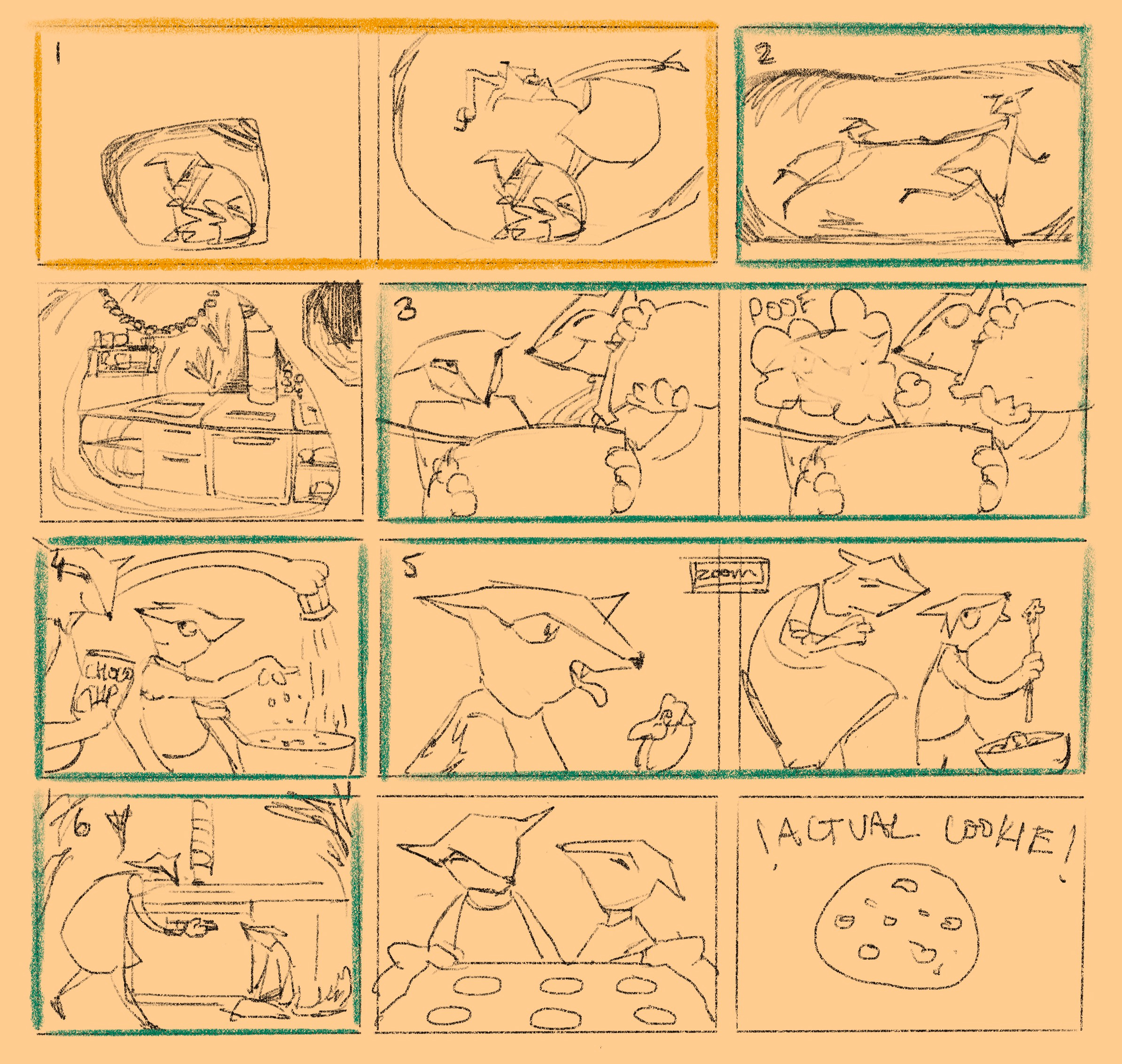

However, still wanting to commit to the idea of the physical format, I chose to create a setting as I would have for the original concept: placing each scene within a large dollhouse-like setting.
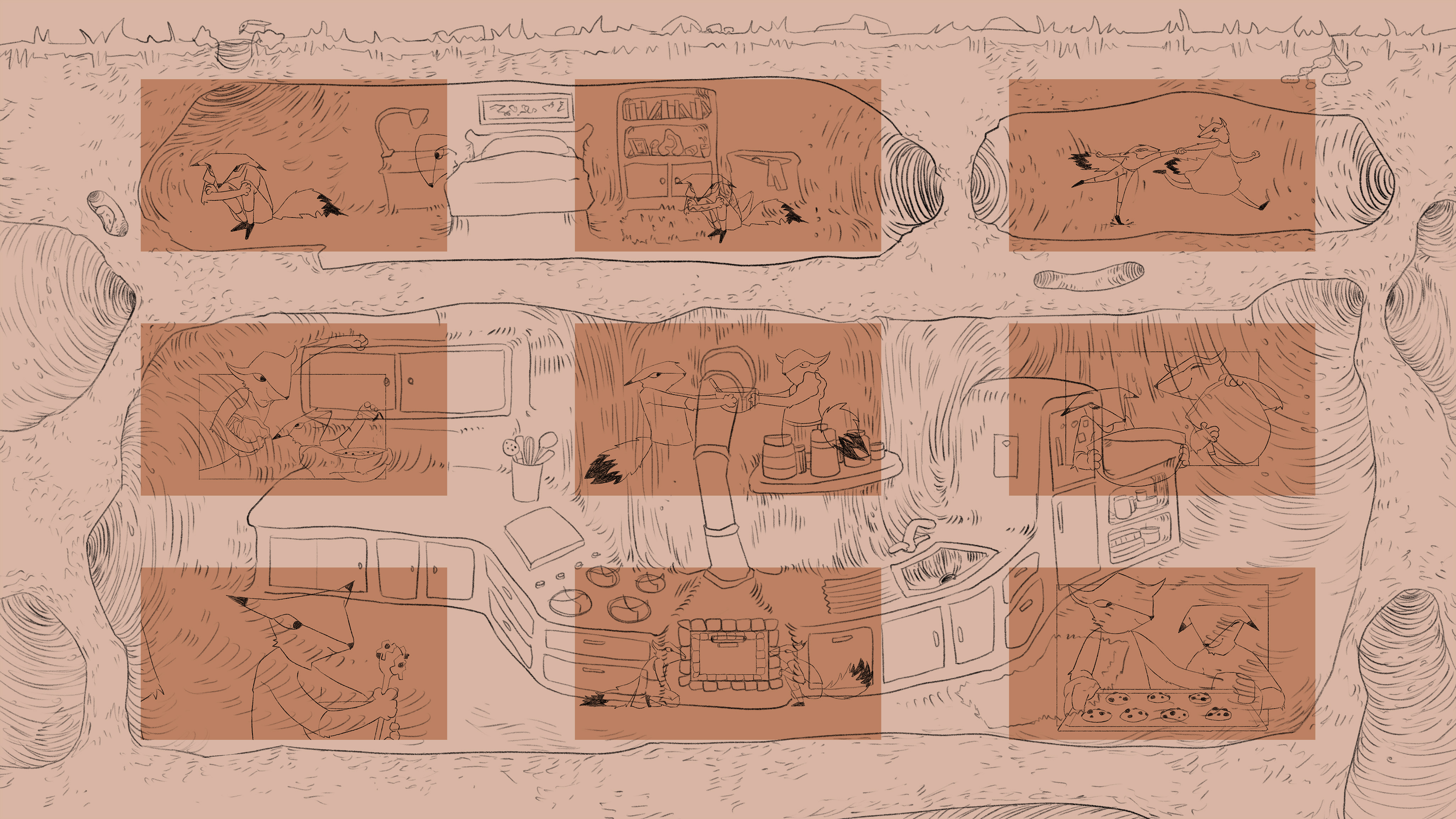
Putting it all together within Figma created the final interactive version embedded at the top of the page. Below are some snippets from my explorations of the physical aspects of the project: creating animation toys, in my quest for 'animation sans film'. The resulting toy, based on hand-crafted wooden gears, allowed me to turn each rotating platform into a different type of toy; one became a zoetrope, while another became a phenakistoscope.
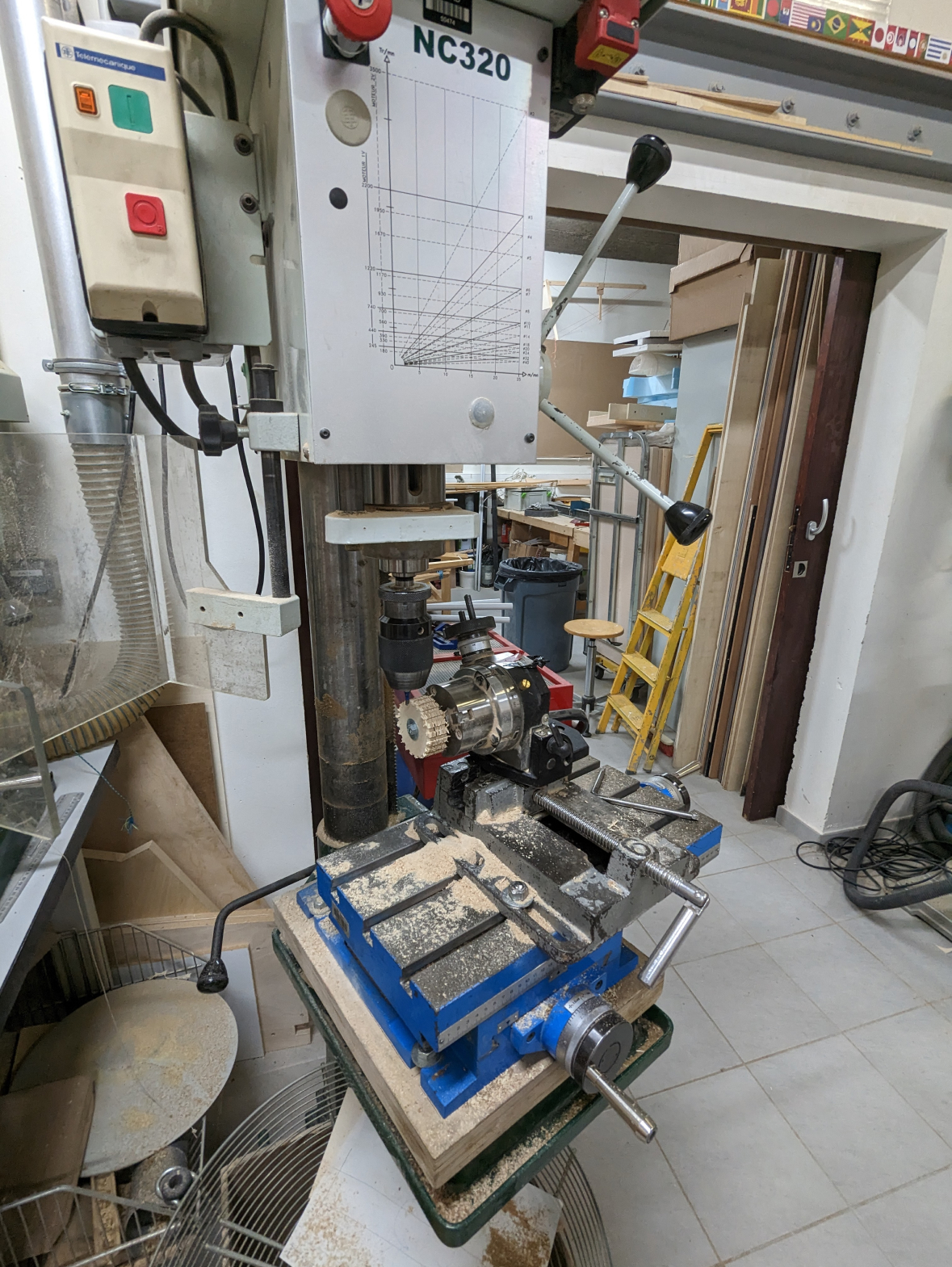

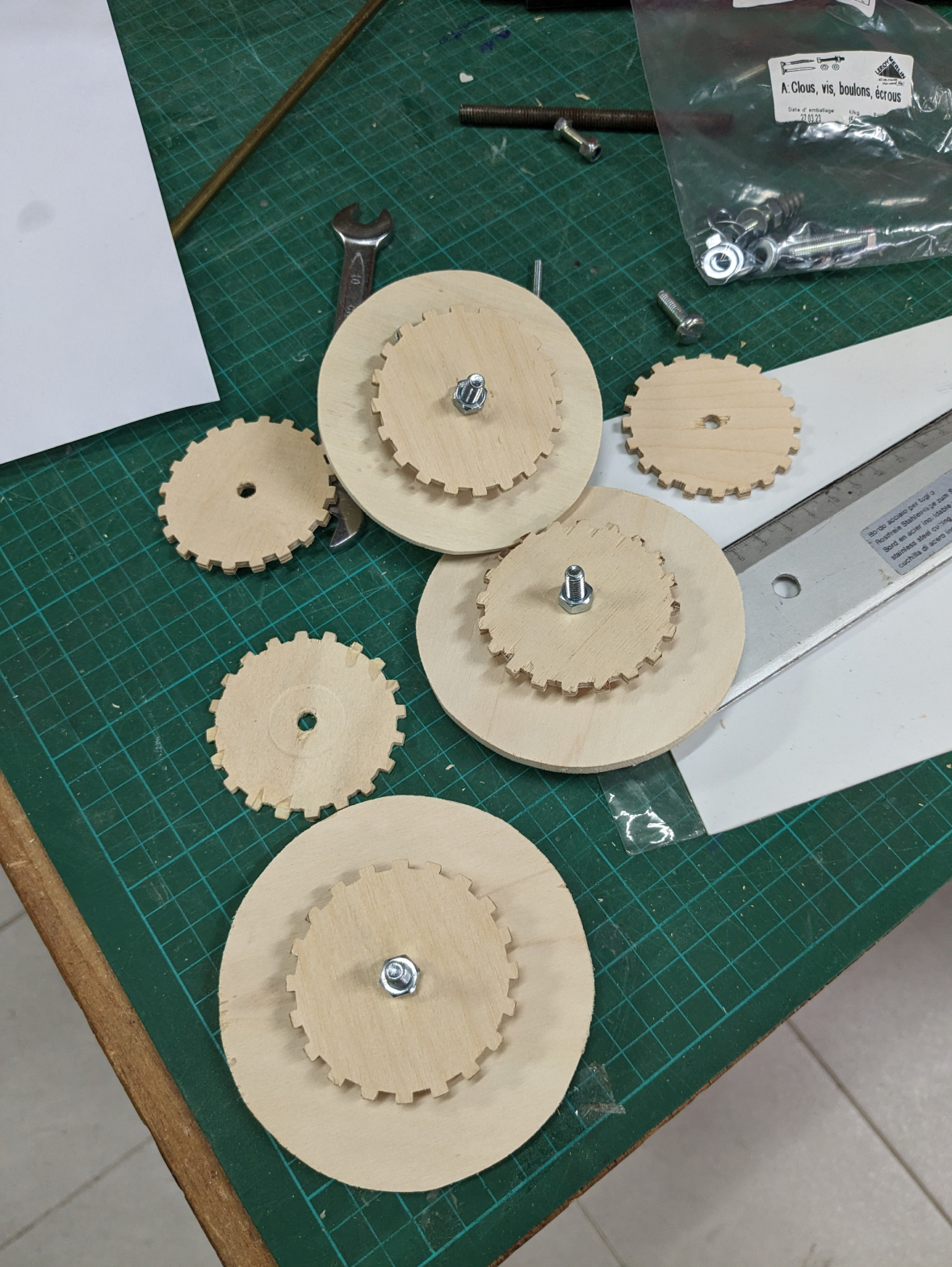
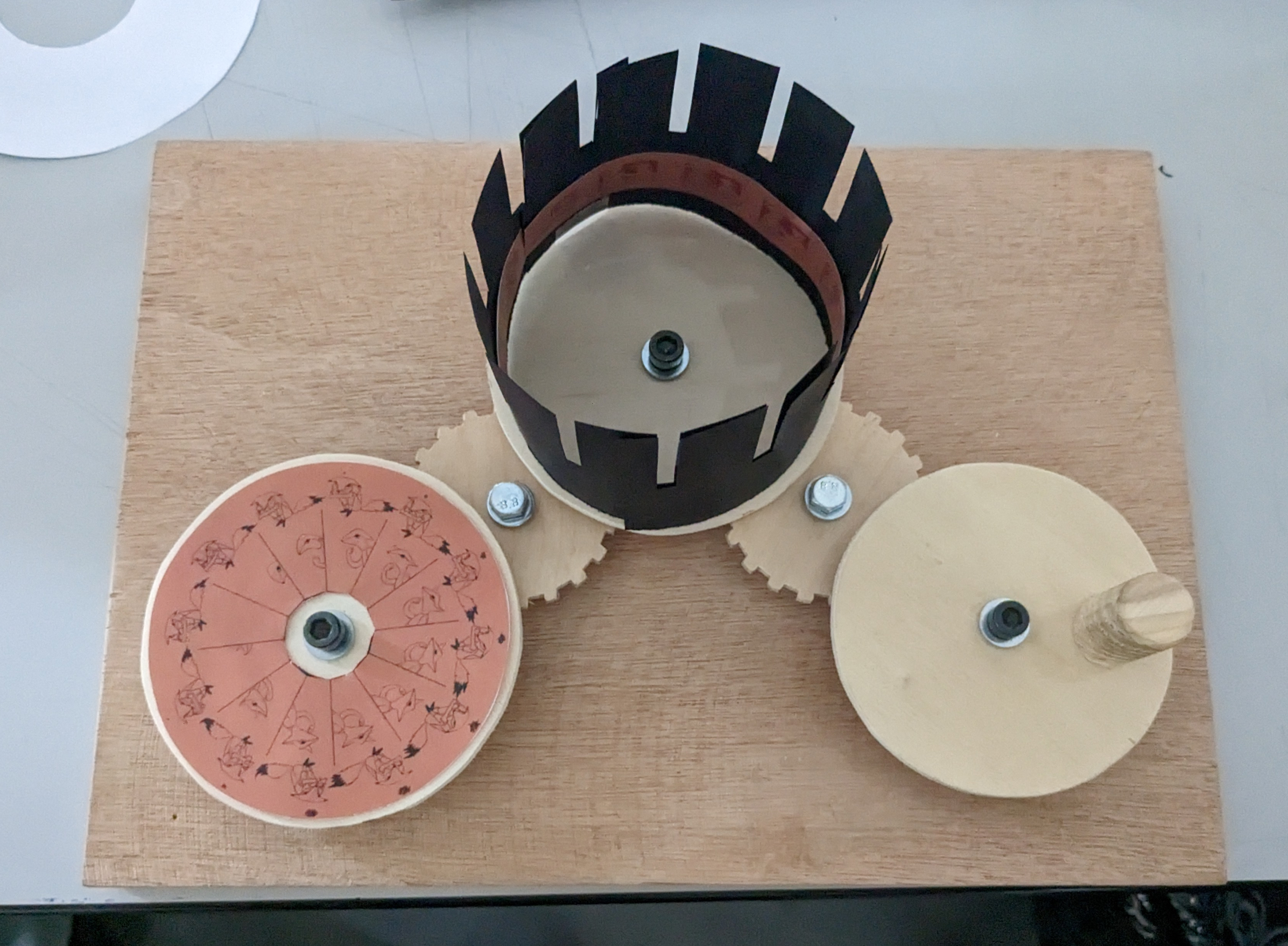
Finally, some further reading for you! The proposal for this project included the philosophy that I carried into it, and
I've included the writing from that section of the proposal below.
Cinema, and animated cinema, have (over the last century) become almost exclusively the domain of film and the digital media. Apart from ‘vintage’ novelties, our interactions with animation—that is, the illusion of the persistence of vision—are almost always separated from us by the ‘screen’, and even material-focused animation (such as stop motion) are filmed and projected. However, unlike cinema, the animated format was never tied intrinsically to the filmic medium, and existed in a pre-camera era as well.
As a result of the overwhelming popularity of the animated movie, the materiality of animation is no longer familiar to us. It’s rare in our adult lives that one encounters and participates in physical animation, and it is increasingly rarer for children too to be exposed to the physicality of the phenomenon, with the increase in accessibility and popularity of screens as well as the explosive proliferation of animated media catered for every age from infancy.
The power of film and digital media is unmatched, and their capabilities to tell beautiful long-form stories should be cherished, celebrated, and furthered. However, the loss in our daily lives of physical objects that play with the principles of animation is an unhappy one. Pop-up books bring joy to millions despite the proliferation of incredible VR experiences, board games still spark the imagination of all ages and thrive alongside the world of video games; to reintroduce another such simple joy into the lives of people is, in my opinion, fruitful in multiple ways.
I advocate often for the advantage of having sources of ‘beauty’ in our daily lives, and believe that its role in aiding happy living goes is multifaceted and underappreciated. A music box, a gramophone, a gilded book; each of these artifacts have had their functions replaced by more powerful tools, and yet they capture the attention in a unique way and present a new method of loving media.
Simultaneously, to have exposure to such things as a child play a powerful role in the development of curious, creative, and observant minds. Media consumption should be a mix of both active and passive styles, where the primary requires the participation of the viewer and the second only requires their attention. However, in recent years a trend towards more passive media consumption and a loss of common experiences of materiality have begun to show effects on child development in many parts of the world.
Interactive animated media is otherwise a matter of the ‘vogue’—experiencing immersive and interactive animated performances in art galleries and exhibitions is wonderful in order to further the development of the medium, yet these do not reach people at the same scale or have such a heavy presence in our daily lives as a Cocomelon episode. How, then, do we reintroduce in the modern world the domestic, low-tech celebrations of animation in the way that images, text, and sound enjoy?
Thank you for your visit!
Copyright © 2023 · Developed with ♡ by Yours Truly · To the Top!